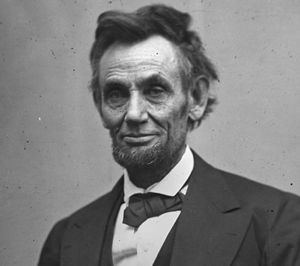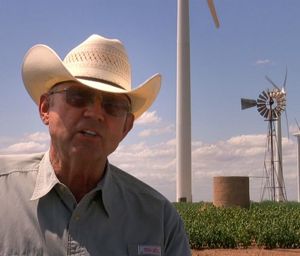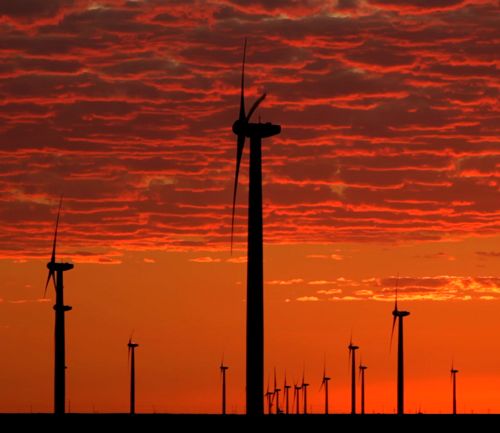Parts of America are powered by technologies that Abraham Lincoln advocated more than a century and a half ago. But some in our country are weakened by failure to appreciate another, even more powerful idea that Lincoln also promoted.

Lincoln believed in the value of science and engineering to help people, and remains the only U.S. president to hold a patent, which was for an ingenious invention to float riverboats over shallows. Long before the Civil War, he spoke on discovery and inventions, saying:
"Of all the forces of nature, I should think the wind contains the largest amount of motive power... one of the greatest discoveries hereafter to be made, will be the taming, and harnessing of it."
As I saw during filming of the new PBS mini-series Earth: The Operators' Manual, America is harnessing the wind. Energy heroes such as rancher Cliff Etheredge of Roscoe, Texas have helped pull power and money out of thin air, providing stability for family farms hard-hit by the recent Texas drought, with an inexhaustible home-grown resource. And, by replacing fossil fuels, the Roscoe wind farm -- and many other renewable energy sources -- help avoid climate changes that could worsen the heat and drought suffered by Texas last year, and cause other problems nationwide.

On this count, though, many Americans remain confused as pundits and politicians pontificate on climate change and energy. Fortunately, the way Lincoln and the Congress dealt with another set of problems still provides guidance to cut through the confusion.
During the Civil War, wooden ships covered in iron plates -- "ironclads" -- were the military cutting edge. But iron rusts and iron plates confuse compass needles. How to steer a safe course?
Lincoln's administration might have asked an individual scientist for help. But researchers build careers by thinking smarter than their teachers: they like to disagree! This almost guarantees that you can find some scientist to argue against almost anything. So instead of asking just one scientist, on March 3, 1863, Lincoln signed the law establishing the National Academy of Sciences, which
"...shall, whenever called upon by any department of the Government, investigate, examine, experiment, and report upon any subject of science or art..."
with
"... no compensation whatever for any services to the Government of the United States."
From 1863 right up until today, the Academy practices the critical art of scientific assessment -- get the best scientists with the full range of scientific views to volunteer time to tell policymakers what is solid, speculative and silly on technical topics.
Lincoln's Administration immediately put the Academy to work. The Compass Committee found a solution using small magnets, and oversaw correction of the Fleet's compasses. The Union navigated securely through the rest of the war because of good scientific assessment.
Half a century later, President Wilson expanded the role of the Academy in preparation for World War I. Since then, the Academy has repeatedly addressed energy issues and my own field of climate change. Vast options exist now to supply our growing demand for energy, but in considering which resources to use, their CO2 emissions matter. By 1979 the Academy found strong scientific evidence for warming from fossil fuel CO2, which has been confirmed and strengthened many times since.
President George W. Bush asked the Academy to consider these issues again. A committee, including the most prominent climate scientist publicly expressing skepticism about the dangers of global warming, affirmed the likely dominant role of humans in the ongoing warming and confirmed the essential accuracy of scientific assessments by the United Nations Intergovernmental Panel on Climate Change (IPCC).
We know how much CO2 is produced by burning fossil fuels and we see that CO2 increasing in the air and ocean. The warming influence of CO2 is basic physics, known for over a century, refined by Air Force research after WWII, and confirmed routinely by satellites today. But this solid science doesn't tell us what to do. Scientific assessments show what is, and how our choices might affect the future, but elected officials must consider jobs, security, economics and more in making the hard decisions. Fossil fuels produce good jobs, for sure, but available scholarship suggests that as many, or even more, will come from renewable energy. Economic analyses generally show that at least some reduction in CO2 emissions is more efficient than business as usual.
So as we ponder energy supply, national security, jobs, climate, and in particular how to reduce dependence on oil imports, scientific assessments point to practicable solutions. And in Roscoe, Texas, and across the nation, pioneers are already using them to help their neighbors. Thanks, President Lincoln, and Cliff Etheredge, true red, white, blue -- and green -- American pioneers then, now and for always.
